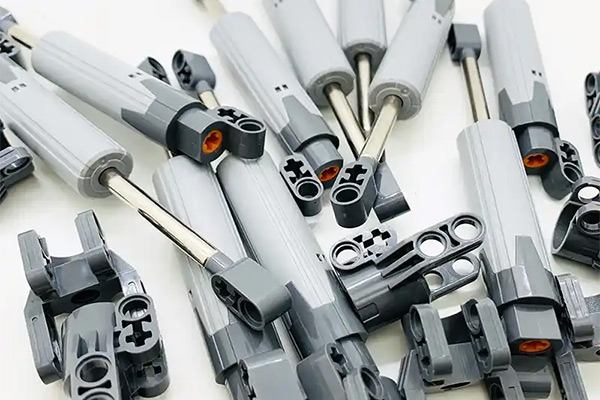The difference between electric scissor lift and hydraulic scissor lift
Electric scissor lifts and hydraulic lifts are common logistics equipment widely used in the loading, unloading and handling of goods. Although they can both complete lifting operations, there are some differences between the two, which will be introduced in detail below.
1. Power system and working principle
● Electric scissor lifts use electric motors to directly drive mechanical transmission mechanisms (such as gears and linear actuators) to achieve lifting and lowering through the conversion of electrical energy into mechanical energy without hydraulic oil involved.
● The hydraulic scissor lift uses hydraulic cylinders and oil pipe systems to generate pressure through the hydraulic pump, pushing hydraulic oil into the cylinder, thereby driving the piston rod to reciprocate in a linear manner, realizing the lifting and lowering of the platform lift.
2. Performance Comparison
3. Maintenance and Cost
● Electric scissor lift: The electric lift works stably, the failure rate is lower than that of the hydraulic type, and the maintenance is relatively simple. It only requires lubrication of mechanical parts and no need for hydraulic oil replacement.
● Hydraulic scissor lift: Hydraulic lifts are more likely to have problems such as hydraulic oil aging, seal leakage and aging, and oil circuit blockage. They need to regularly replace hydraulic oil, check seals and oil circuits, and replace maintenance parts, which is relatively expensive.
● After purchasing a scissor lift, regular maintenance and maintenance are the key to ensuring its long-term and stable operation. Understand the equipment maintenance manual, regularly check the status of each component, and replace worn parts in time, which can effectively extend the service life of the equipment and reduce the failure rate.
There are certain safety risks during operation of electric lifts. If improper operation is carried out, it may cause damage to goods or cause personal injury. Hydraulic lifts need to ensure the quality of hydraulic oil when used, otherwise the working efficiency of the system will be reduced.
4. Structure and Function
Electric scissor lift table:
● The scissor structures mostly use aluminum alloy or lightweight steel, which is small in size and suitable for narrow spaces.
● Some models integrate intelligent control systems (such as fault self-test and LCD panel display).
● Disadvantages: Long-term high load can easily cause the motor to overheat and affect the service life.
Hydraulic scissor lift:
● The scissor structure is usually made of manganese steel, with high structural strength and strong stability.
● The hydraulic system comes with buffering function, and the lifting process is more stable, suitable for precision equipment handling.
● Disadvantages: The risk of hydraulic oil leakage may pollute the environment.
5. Applicable scenarios
Applicable scenarios for electric scissor lift platform:
● Indoor precision operations (such as laboratory equipment installation, electronic component assembly)
● Frequent lifting and lowering demand (such as warehouse light cargo turnover)
Applicable scenarios for hydraulic scissor lifts:
● Indoor and outdoor heavy-load operations (such as construction sites, logistics centers)
● Complex terrain (such as muddy roads, slopes) and harsh environments
Note: Electric scissor lift has lower long-term usage costs, while hydraulic type has lower initial investment but higher maintenance costs.
Through the above comparison, the choice of the two needs to comprehensively consider the load requirements, use environment and maintenance costs. The electric scissor platform focuses on flexibility and economy, while the hydraulic lift is suitable for high-strength operation scenarios.





